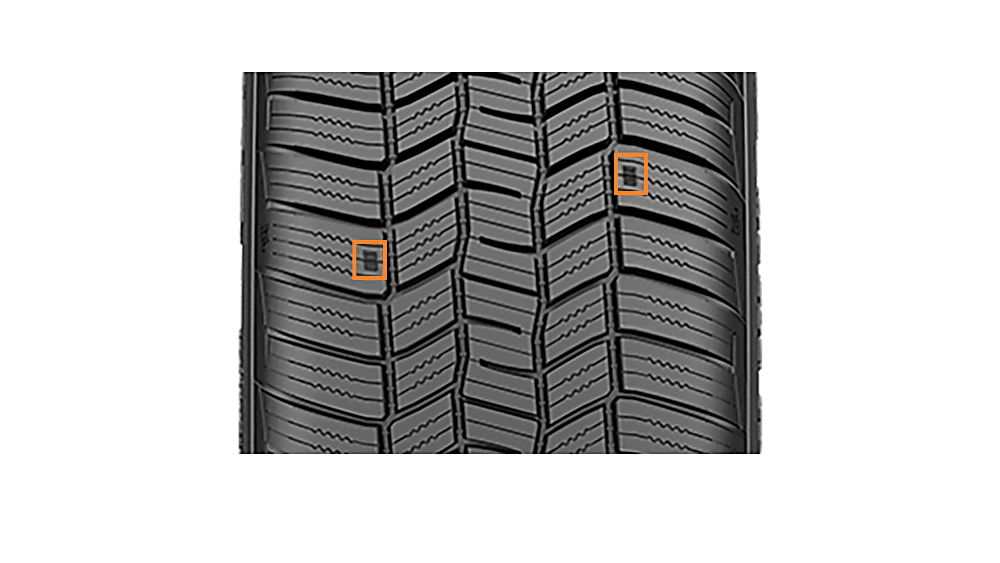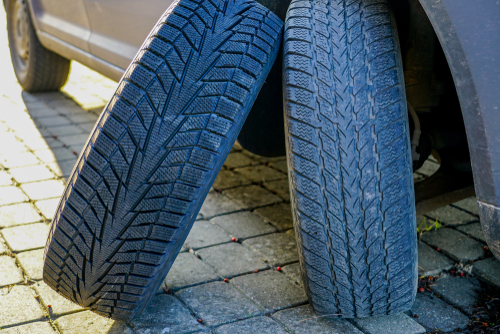Quick Summary:
- Tire wear bars are used to determine if there is enough tread left on the tire and help determine if replacement is needed
- Tread wear depth blocks connect tread blocks from separate ribs and indicate tire wear
- Tire wear bars can help identify irregular wear patterns and potential issues with tire pressure or structure
- Tire wear bars are typically at a depth of 2/32 inches, which is the legal minimum tread depth
- Having tread depth below the wear bars can be dangerous and may result in a ticket
- Tire wear bars are located between the ribs of the tire in multiple positions
How do you know if your tires need to be replaced? When there's not enough tread left. But how do you know if there's not enough tread left? If you thought of a bald tire, you're wrong. There's a big difference between a tire not having enough tread and being totally bald. A spent tire will have the remnants of tread on top. It might appear as though there's still a little bit of life to them, but it is the end of the road.
The key is to replace the tires when the tread depth is reduced to 2/32 of an inch. That can sound kind of tedious to keep up with, but there are plenty of ways to gauge tread depth on your tires. One of which is actually built into your rubber.
They're called tread wear bars, and they help you gauge the life of your tires. In the following, you’ll find out where wear bars are, what they tell you, and how they can help you determine if your tires need replacing or not.
Where are tire wear bars?
Before we jump into the location of tire wear bars, let's first talk about the parts of a tread pattern. Your tire's tread pattern might look complicated, but the uniform structure keeps things simple.
The raised bodies that run along the surface of the tire are called ribs, which are made up of tread blocks. The deep channel between each rib is known as a groove. Whenever you measure tread depth, you gauge how high the top of the rib sits compared to the bottom of the groove.
Tread wear depth blocks live between the ribs within the groove. These rubber blocks stand proud of the bottom of the groove, connecting tread blocks from separate ribs.
What do tire wear bars indicate?
As you already know, tire tread wear bars, sometimes called tread markers or tire wear indicators, are in place to tell us if there is enough tread left on the tire. Of course, you can use this to determine the overall health of the tire's tread, but it can also be used to pinpoint any issues.
These tire wear bars are found on multiple parts across the tire. By reading them carefully, you can tell if the tire is wearing in some places more than others. You can use that information to determine if you have an irregular wear pattern, which can be linked to issues with tire pressure, structure, or mechanical components of your car. Learning how to read those little pieces of rubber can tell you that much about your car, and it's worth doing.
What depth are wear bars on tires?
Remember when we said that you should replace your tires when there are 2/32 inches of tread left? It's by no coincidence that tire tread wear bars sit right around that depth. We didn’t mention that that number is the lowest amount of tread you can have left by law. Any less can be dangerous, and that should be your primary concern. However, you can get a ticket if your tread is any lower.
That's why tire wear bars are so convenient. If they nearly match the height of the ribs or tread blocks, you can quickly determine that the tires need to be replaced. Of course, there are other methods to check tread depth, but nothing is quite as convenient.
How do I find tire wear bars?
Look between the ribs of your tire to find the tire wear bars, but keep in mind that they are located at different positions. So, you might need to look in a few places to find one, but they should be found in six or more locations on most tires.
The wear bars might be hard to spot if you are running a performance tire or anything with an aggressive tread pattern. They are probably there, though, only usually much smaller because of narrow grooves and wide ribs. Therefore, you might have to get in a position that allows you to scan the tire from a better vantage point.
Some tires might not have wear bars at all. Instead, they have tire wear indicator dimples. These dimples can be found in select positions on the tread blocks or ribs. While they look different, they still tell us the same thing. If the bottom of the dimple sits nearly flush with the tread, it’s time to replace your tire.

What is a good tire tread depth?
A good tire tread depth is anything over 2/32 inches of tread. But the recommended 2/32 inches of tread depth is the bare minimum. Replace your tires immediately if they’re at this point. . If not, they will continue to wear and create dangerous driving situations.
It's good practice to replace your tires well before then. Your best move? Replace tires when 4/32 inches of tread remains.
Anything deeper than that is considered good. We know we're splitting hairs when talking about such small fractions, but we haven't discussed other parts of the tire's tread pattern yet.
For example, sipes are little grooves in the tread blocks that whisk away moisture to maintain contact with the ground. These sipes will begin to disappear around 4/32 of an inch, meaning your tire simply won't perform as well as it used to at this point.
Are there other methods to checking tread depth?
Tire tread wear bars are super convenient, but they aren't the only way to check your tread depth. In fact, they only roughly sit around 2/32 of an inch from the bottom of the groove.
There is a chance for manufacturing imperfections that can cause it to vary from that point.
There are two alternative methods you can use. Though we here at SimpleTire prefer a quarter, another quick one involves a penny.
Lincoln's head just so happens to sit around 2/32 inches away from the penny's edge. If you place the edge of the penny in the groove of your tire, with Lincoln's head facing in, you can measure tread depth. If the tread covers Lincoln, you know you're good. If his head is totally exposed, you know it's time to replace the tires.
That's very convenient, but are pennies perfect? No. Lincoln's head isn’t stamped with laser precision each time, making this just another quick reference. If you want to get it down to a science, a reliable tire tread depth gauge is your best friend, as it is designed to give you exact readings on how much tread remains on your tires.
While not meant to replace a tread depth gauge, some tires have built-in features that visually tell drivers when it’s time to replace their tires. The Continental ExtremeContact DWS06 PLUS has the letters DWS (dry, wet, and snow) stamped on them which will fade away when the tire is no longer safe to use in that condition, while the General Altimax RT43 has Replacement Tire Monitor stamped on the center rib, which will wear down to “replace tire” when you need a new set.

Learning how to read the tread wear bars in your tire can help keep you safe. Again, there are more precise ways of doing things, but this will at least get you in the ballpark.
This is just one way to determine the health of your tire. There are plenty of parts to a tire, and there's a lot of room for things to go wrong. Tire tread wear bars can only tell you so much and won't reveal issues such as worn-out sipes, defective tire structural components, and so on.
If your tire wear bars are getting dangerously high, give us a call. We'll gladly answer your tire-related questions, point you in the direction of a trusted local installer who can help you sort out any of your tire dilemmas, or even help you shop for a new set of tires.

